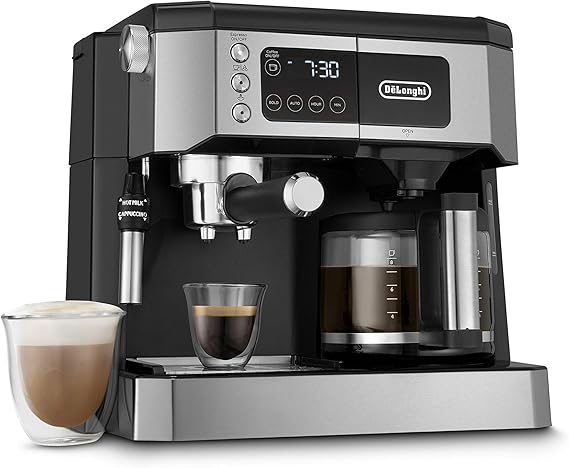Espresso machines: sleek, powerful, and capable of brewing the perfect shot – or a disastrous mess. Their seemingly simple operation belies a complex interplay of physics and engineering. Understanding the underlying principles not only enhances your appreciation for your machine but also helps you troubleshoot problems and, ultimately, pull better shots. This deep dive explores the physics at the heart of these marvelous devices.
The Power Behind the Pressure: Thermodynamics and the Brewing Process

At the core of every espresso machine lies the principle of thermodynamics, specifically the relationship between heat, pressure, and water. The goal is to force hot water, at a specific pressure and temperature, through finely-ground coffee. This process extracts the essential oils and compounds that contribute to espresso’s characteristic flavor and aroma.
The machine heats water using a heating element (often a thermoblock or boiler system – we’ll explore these later), raising its temperature to optimal brewing levels, typically between 195-205°F (90-96°C). This hot water is then pumped, usually via a pump, through the coffee puck (the compressed mass of ground coffee) inside the portafilter. The pressure, typically between 9 and 10 bars (9-10 atmospheres), is crucial. This high pressure forces the water to travel through the fine particles of coffee at a controlled rate, extracting the desired compounds.
The Pump: The Heart of the Machine
The pump, whether a vibratory pump or a rotary pump, is responsible for generating the high pressure required for espresso extraction.
Vibratory pumps are common in entry-level and home espresso machines. They’re compact and relatively inexpensive, utilizing a vibrating diaphragm to move water. However, they generally offer lower maximum pressure and less consistent pressure profiles compared to rotary pumps.
Rotary pumps, typically found in professional and higher-end home machines, utilize a rotating mechanism to draw and push water. They provide higher maximum pressure, a more consistent pressure profile (crucial for even extraction), and are typically quieter and more durable than vibratory pumps. This consistent pressure is vital because uneven extraction leads to sour or bitter shots.
Heat Exchange Systems: Boiler vs. Thermoblock

Two primary heating systems dominate the espresso machine landscape: boilers and thermoblocks.
Boilers are essentially tanks of water that are heated. This system can hold a larger volume of hot water, allowing for more shots to be pulled without re-heating. However, boilers require longer heat-up times and are generally less energy-efficient than thermoblocks.
Thermoblocks utilize a single block of metal that heats up quickly. This translates to faster heating and a more energy-efficient operation. However, thermoblocks generally have a smaller water reservoir, which might require longer waits between shots, especially if making multiple espressos consecutively. They also tend to not maintain the temperature as consistently as a boiler.
The Importance of Pressure and Torque (In Pumps)

While the overall pressure at the group head (where the coffee is brewed) is paramount, the pump’s torque is a less obvious but equally significant factor in ensuring reliable operation. Torque, the rotational force, determines how effectively the pump overcomes resistance. High torque means that even with increased resistance (e.g., scale buildup in the pump, or using thicker coffee), the pump maintains its pressure. It’s the difference between a consistent pressure profile, leading to better espresso, and fluctuating pressure that yields an inconsistent and often bitter or sour brew. A pump with low torque might struggle to reach the desired 9 bars, even with a clean system.
Comparing Machines: Considering Torque and Other Specifications
When comparing espresso machines, pay close attention to the pump’s specifications. Manufacturers rarely highlight torque explicitly, but the stated pressure capacity is a good proxy. A higher maximum pressure rating typically indicates a more powerful pump, likely with higher torque. Also, consider the machine’s overall power consumption. A higher wattage generally points to more robust heating elements and a more powerful pump, but it also increases your energy bill. Research independent reviews to gather insights on real-world performance. This is where information from other users is very valuable.
For instance, you might find comparisons between a popular home model with a vibratory pump and a professional-grade machine with a rotary pump. The professional model will likely boast superior pressure stability and longevity, but this comes at a significant cost. Similarly, the torque of one machine’s pump may allow it to handle different coffee grinds better than a competitor.
Practical Advice for Espresso Enthusiasts

Understanding the physics helps you optimize your espresso experience:
- Regular Maintenance: Descale your machine regularly to prevent scale buildup, which can impede pump performance and reduce machine lifespan.
- Water Quality: Use filtered water to minimize mineral deposits and prolong the life of your heating elements and pump.
- Consistent Grinding: The grind size profoundly impacts extraction. A finer grind may be needed if your pump struggles to reach optimal pressure.
- Proper Tamping: This critical step ensures a consistent coffee puck and enables even water distribution.
In conclusion, the seemingly simple act of brewing espresso involves a fascinating interaction of thermodynamics, hydraulics, and mechanical engineering. Understanding the underlying principles of your espresso machine enables you to extract the best flavor from your beans and maintain your machine’s peak performance for years to come.